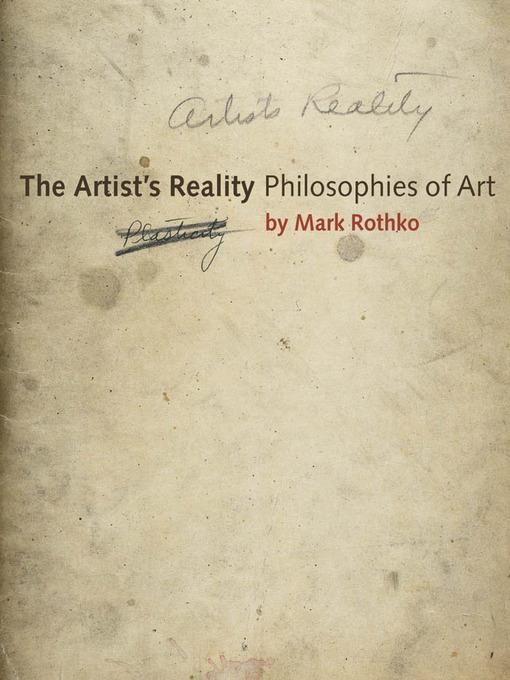
The Artist's Reality
- اطلاعات
- نقد و بررسی
- دیدگاه کاربران
نقد و بررسی

September 1, 2004
While major 20th-century abstract artist Rothko (1903-1980) left a record of his ideas about art and method in several essays and reviews, rumors circulated about the existence of a full-length monograph on the philosophy of art. Rothko himself never brought it forth, and it was not found at his death. Probably written in the early 1940s, the newly discovered manuscript provides Rothko's considerable insights into topics ranging from art as a form of action to plasticity, naturalism and primitivism. For Rothko, "Art is not only a form of action, it is a form of social action. For art is a form of communication." Thus beauty resides less in objects than in "a certain type of emotional exaltation which is a result of stimulation by certain qualities common to all great works of art." An introduction by Rothko's son, Christopher, provides the details of the discovery of the manuscript as well as a nice short biography of Rothko. The whole offers fascinating insights into the ways a major artist thought about his medium and its conceptual premises.

December 13, 2004
While major 20th-century abstract artist Rothko (1903-1980) left a record of his ideas about art and method in several essays and reviews, rumors circulated about the existence of a full-length monograph on the philosophy of art. Rothko himself never brought it forth, and it was not found at his death. Probably written in the early 1940s, the newly discovered manuscript provides Rothko's considerable insights into topics ranging from art as a form of action to plasticity, naturalism and primitivism. For Rothko, "Art is not only a form of action, it is a form of social action. For art is a form of communication." Thus beauty resides less in objects than in "a certain type of emotional exaltation which is a result of stimulation by certain qualities common to all great works of art." An introduction by Rothko's son, Christopher, provides the details of the discovery of the manuscript as well as a nice short biography of Rothko. The whole offers fascinating insights into the ways a major artist thought about his medium and its conceptual premises.
Copyright 2004 Library Journal, LLC Used with permission.




دیدگاه کاربران